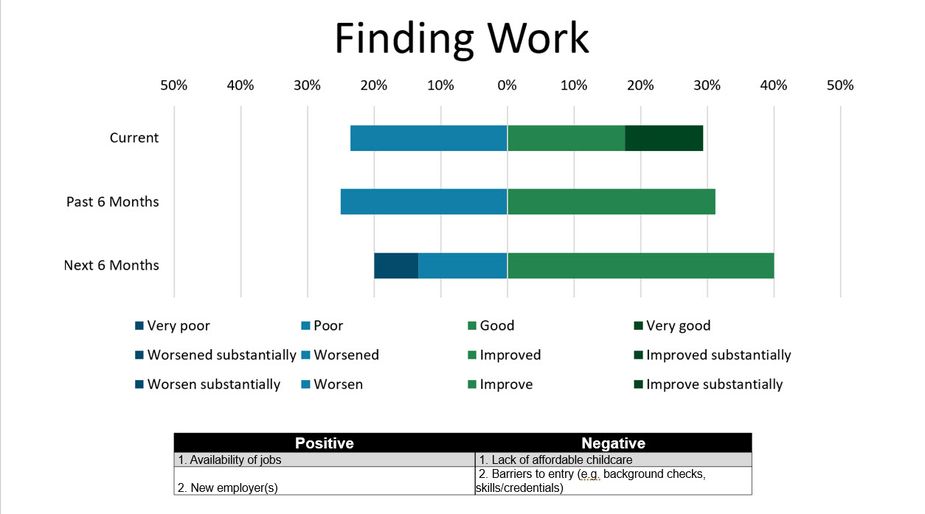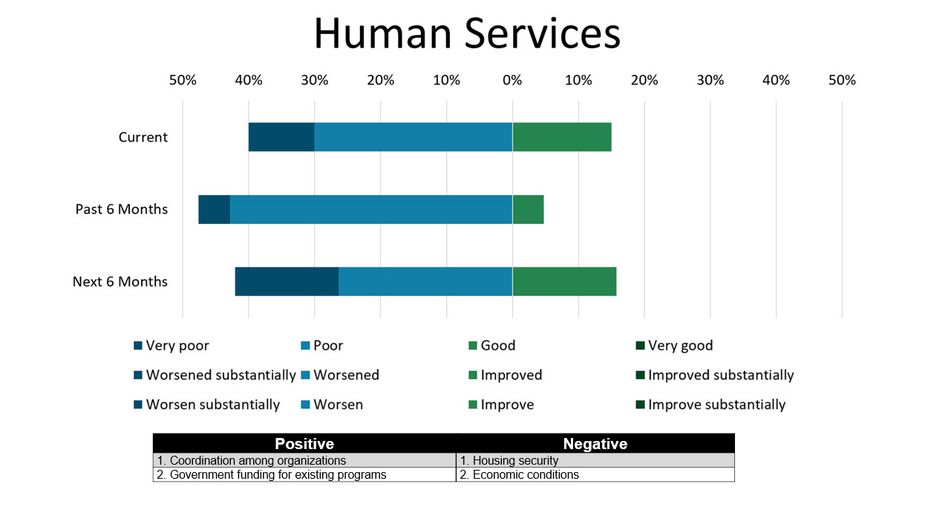The Kansas City Fed conducts many surveys each year to understand different sectors of the economy. Two of these, the Community Conditions Survey and the Community Perspectives Survey, are focused directly on low- and moderate-income (LMI) individuals and communities and the organizations that serve them. Learning about conditions helps the Federal Reserve’s community development teams promote economic growth and financial stability in lower-income areas.
The surveys cover the district and the nation
The Community Conditions Survey is a district-wide survey in the fall, and the Community Perspectives Survey is a national survey in the spring. Both surveys ask community leaders about a wide range of issues affecting LMI individuals. These topics include employment, financial stability, education, and access to services. The national survey also asks about organizations’ financial health and ability to meet demand for services.
These surveys provide new insights by consistently tracking developments over time. For our community development team, the surveys provide new perspective and context to complement more traditional data sources and help inform conversations about local needs. The data can also inform policymakers and community organizations in their strategy and program design choices and support funding proposals.
Here is what people told us in the most recent survey
The most recent survey, conducted in the fall of 2024, found overall community conditions in the Kansas City Fed’s district to have generally moderated over the past year, led by a softening labor market and some improvements in housing. The Kansas City Fed’s district includes all or part of seven states – Colorado, Kansas, western Missouri, Nebraska, northern New Mexico, Oklahoma and Wyoming.
Respondents were mixed on the strength of the job market, with many mentioning increased difficulties in getting hired for workers with high barriers to employment such as justice-involvement, drug use, or reliance on services such as public transportation and childcare.
Finding work
Will Lufburrow, president and chief executive officer of Goodwill of Central Oklahoma, sees many of these trends affecting Goodwill employees and clients. Lufburrow’s assessment of the current labor market reflects general findings from the Community Conditions Survey. "While we are in uncertain times in the first quarter of 2025, it is becoming very evident that the eagerness to get back into work is growing,” he said. “My hope is that employers in our communities see barriers as an obstacle to overcome for applicants, not a stop sign for a job. Whether recently leaving the justice system or overcoming a disability, the clientele coming through the doors at Goodwill are ready to earn a paycheck and grow their own personal experience.”

Human services and supports
While survey respondents were generally optimistic about the availability of employment, some were concerned about increasing needs for social services and the impact of the rising cost of living. Lufburrow finds these trends affecting the people Goodwill serves. “As a leading service provider for individuals with barriers to employment, Goodwill has seen our client base continue to struggle with a multitude of challenges in today's job market,” he said. “While there currently are jobs available in the LMI sector, we are seeing a consistent struggle to obtain adequate childcare and reliable transportation.”

Financial stability
While respondents reported that personal finance conditions have worsened slightly over the past year, they were fairly optimistic about improvements in the coming months. This is one area that is mixed in current assessments. As Lufburrow said, "While we have seen increased optimism in regard to the financial sector, the fact remains that we are still suffering the ill effects brought on by the recent wave of inflation. We continuously work with individuals who are too reliant on quick credit card fixes, strapping into more debt without the means to overcome the obstacle. With the recent market report of slowed inflation there is optimism, but the effects won’t be seen in the personal household for some time."

Putting the findings to work
The findings from the External LinkCommunity Conditions Survey and the External LinkCommunity Perspectives Surveys are available online for public use. Additional background information on the surveys is also provided.
Consider signing up to take the surveys
New respondents are always needed to take part in the surveys. Representatives from organizations with first-hand knowledge of issues in low- and moderate-income communities are encouraged to apply. You can easily sign up for both surveys through this External Linkshort, online registration form.
